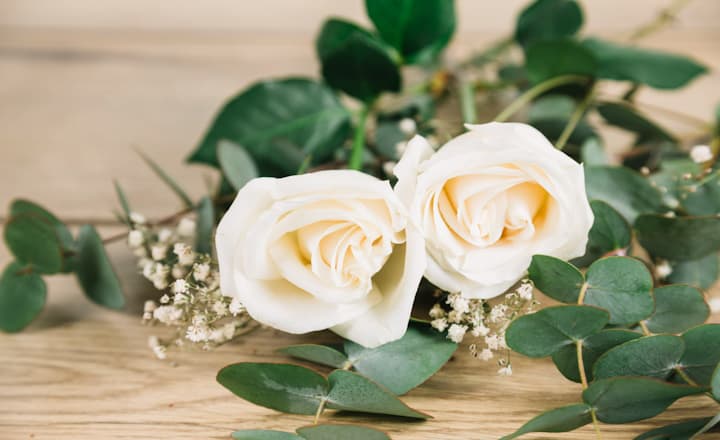There’s a timeless elegance to a garden that’s filled with the tranquil charm of white flowers. It’s not just about the way these blossoms stand out against a lush backdrop of greenery, but also the undeniable sense of peace and purity they seem to bring to any space. White blooms can also be a canvas on which moonlight, sunsets, and garden lighting can project an ephemeral fascination. If you’re looking to add a touch of classical grace to your garden or simply wanting to complement a colorful palette with some pristine highlights, here is a bouquet of the best white flowers to consider.
1. Gardenia

Scientific Name: Gardenia jasminoides
Originating from the Far East, gardenias are known for their waxy, creamy-white blossoms and intoxicating fragrance. They’re often associated with luxury and feature heavily in floral arrangements where their powerful scent is prized.
Growing Tips: Gardenias thrive in well-drained, acidic soil with plenty of organic matter. They prefer bright, indirect light and a consistent watering schedule — moist, not wet!
Maintenance: Regular pruning after the blooming season will keep your gardenia bush in good shape. Fertilizing is key, especially with an iron-rich fertilizer to prevent yellowing of the leaves.
Related: Best Red Flowers for Your Garden
2. Lily of the Valley
Scientific Name: Convallaria majalis
A staple in many a shade garden, these dainty bells on arching stems exist in clusters, often adorning wedding bouquets and symbolic of sweetness and the ‘return of happiness’.
Growing Tips: These fragrant little flowers prefer cool, moist soil, so a shady spot is ideal. Plant in the spring or fall and watch that they don’t spread too aggressively.
Maintenance: Keep the area around lily of the valley weed-free, as they can be quite delicate. A layer of mulch can help retain moisture and keep the soil cool.
3. White Rose

Scientific Name: Various species and hybrids
Roses have a reputation for being the ultimate romantic bloom, and the white varieties only enhance this association. They’re symbols of purity and are known for their often larger and lush blossoms.
Growing Tips: Plant roses in well-drained soil with at least six hours of sunlight. Water roses at the base to reduce the risk of disease, and be sure to provide support for climbing varieties.
Maintenance: Prune dead or diseased canes regularly and watch out for common rose diseases like powdery mildew and black spot.
4. Calla Lily
Scientific Name: Zantedeschia aethiopica
This dramatic flower, often mistaken for a lily, with its architectural shape is an artistic favorite. It’s a symbol of beauty and can add a modern flair to any garden or indoor space.
Growing Tips: Calla lilies like moist soil but should not be left to sit in water. They need bright, indirect light and can be moved outdoors in the summer in cooler climates.
Maintenance: After the flowering season, allow the foliage to die back naturally and reduce watering until the next growing season.
5. White Hydrangea

Scientific Name: Hydrangea paniculata and other species
White hydrangeas offer a profusion of blooms that can be quite showy. They’re also relatively easy to grow and care for, making them a popular choice for many gardeners.
Growing Tips: Plant in well-draining soil in an area with morning sun and afternoon shade. You can change the color of your hydrangea to blue by adding aluminum sulfate to the soil.
Maintenance: Pruning is simple: just remove old blooms to the first set of new leaves. Water regularly, especially in the heat, and be mindful of over-fertilizing, which can lead to weak stems.
Related: 7 Black Flowers to Add a Moody Vibe to Your Garden
6. Jasmine

Scientific Name: Jasminum
For lovers of fragrance, the white varieties of jasmine are must-have additions to any garden or balcony. Their star-shaped flowers are delicate, and their scent in the evenings is just divine.
Growing Tips: Jasmine prefers well-drained soil and full sun to light shade. They’re a climbing plant, so provide a trellis to support their growth.
Maintenance: Prune after the flowering season to maintain a neat shape. Water regularly but don’t allow them to sit in water, or root rot can occur.
7. Shasta Daisy
Scientific Name: Leucanthemum x superbum
A classic ‘decorous daisy’, the Shasta variety offers the iconic white petals and sunny yellow centers, a favorite for those looking to attract pollinators.
Growing Tips: Plant in well-drained soil with full sun to some afternoon shade. Water consistently, especially during dry periods.
Maintenance: Deadhead regularly to prolong the blooming period, and divide clumps every two to three years to ensure healthy growth.
8. White Tulip
Scientific Name: Tulipa species and hybrids
Symbolic of fresh beginnings and new growth, white tulips are the quiet achievers of spring gardens, often planted in large drifts for maximum impact.
Growing Tips: Plant tulip bulbs in the fall in well-drained soil. They need a period of cold dormancy, so winter temperatures are essential for healthy growth.
Maintenance: Deadhead as the flowers fade, but allow the foliage to die back naturally to provide the bulbs with the energy for the next season.
Conclusion
The world of gardening offers a rainbow of possibilities, but there’s something uniquely enchanting about the purity and simplicity of white flowers. They don’t just add an aesthetic touch to your garden; they invite a certain tranquility and a sense of quiet majesty, no matter the size or style of your outdoor space. Incorporating these eight blossoms into your garden design can create a haven of peace, a place where you can escape the daily rigors and find solace in the delicate dance that only nature can choreograph.
Whether you’re starting as a new enthusiast or you’re a seasoned gardener, remember that each variety has its preferences and quirks. Pay attention to the individual growing tips and maintenance routines. And most of all, enjoy the process — cultivating a garden is both an art and a science, and the results, as any gardener would tell you, are truly the fruits of your labor.

